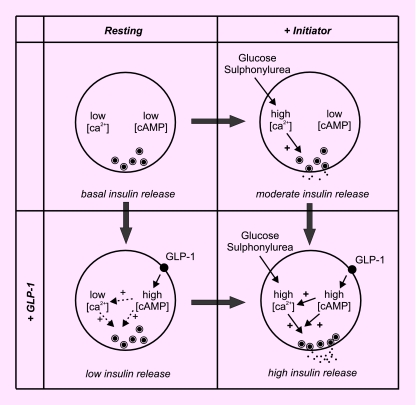FIGURE 1.
Glucose-dependent stimulation of insulin release by glucagon-like peptide-1 (GLP-1). At low glucose concentrations (left), intracellular [Ca2+] is low, and although stimulation by GLP-1 causes an increase in cyclic adenosine monophosphate (cAMP), this causes only small increases in [Ca2+] and minimal enhancement of insulin release (dashed arrows). The amount of insulin released is not enough to induce hypoglycaemia. At high glucose concentrations or in the presence of sulphonylureas (right), [Ca2+] is elevated, and the elevation of cAMP by GLP-1 can then potently enhance the rate of insulin release, as well as further increasing [Ca2+].

